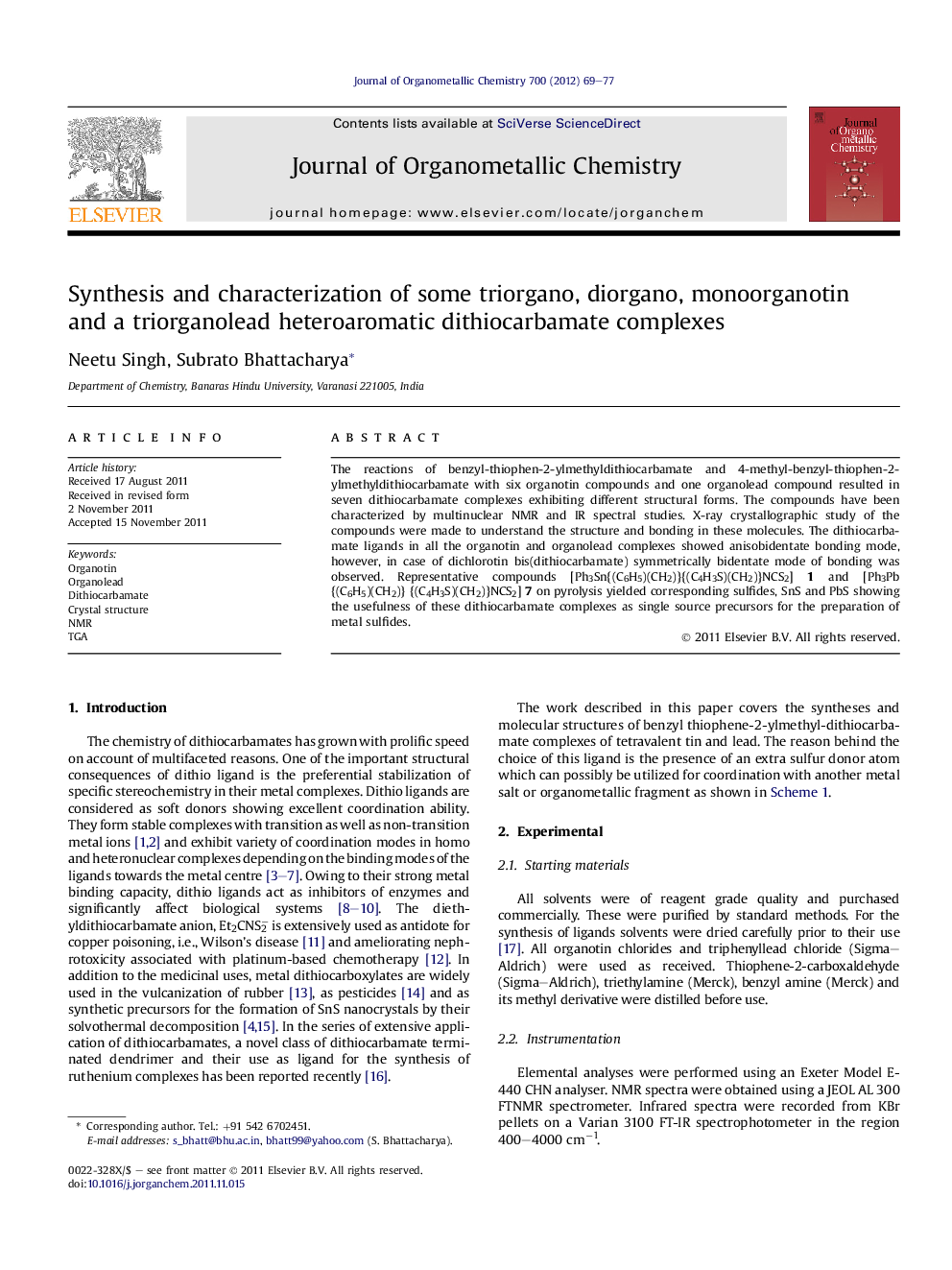| کد مقاله | کد نشریه | سال انتشار | مقاله انگلیسی | نسخه تمام متن |
|---|---|---|---|---|
| 1323504 | 1499935 | 2012 | 9 صفحه PDF | دانلود رایگان |

The reactions of benzyl-thiophen-2-ylmethyldithiocarbamate and 4-methyl-benzyl-thiophen-2-ylmethyldithiocarbamate with six organotin compounds and one organolead compound resulted in seven dithiocarbamate complexes exhibiting different structural forms. The compounds have been characterized by multinuclear NMR and IR spectral studies. X-ray crystallographic study of the compounds were made to understand the structure and bonding in these molecules. The dithiocarbamate ligands in all the organotin and organolead complexes showed anisobidentate bonding mode, however, in case of dichlorotin bis(dithiocarbamate) symmetrically bidentate mode of bonding was observed. Representative compounds [Ph3Sn{(C6H5)(CH2)}{(C4H3S)(CH2)}NCS2] 1 and [Ph3Pb{(C6H5)(CH2)} {(C4H3S)(CH2)}NCS2] 7 on pyrolysis yielded corresponding sulfides, SnS and PbS showing the usefulness of these dithiocarbamate complexes as single source precursors for the preparation of metal sulfides.
A few organotin and organolead dithiocarbamate complexes have been synthesised and characterized by spectral and X-ray crystallographic studies. Representative compounds [Ph3Sn{(C6H5)(CH2)}{(C4H3S)(CH2)}NCS2] 1 and [Ph3Pb{(C6H5)(CH2)}{(C4H3S)(CH2)}NCS2] 7 on pyrolysis yielded corresponding sulfides, SnS and PbS.Figure optionsDownload as PowerPoint slideHighlights
► Dithiocarbamate ligands containing thiophene have been prepared.
► Organotin(IV) and organolead dithiocarbamates have been synthesized and characterized.
► Only two Cl atoms of SnCl4 could be substituted by the dithiocarbamate ligands.
► Pyrolysis of representative Sn and Pb complexes yielded SnS and PbS.
Journal: Journal of Organometallic Chemistry - Volume 700, 1 March 2012, Pages 69–77